
PHOTOS FROM THE FARM: 8.7.2020
08/07/20 — Ada Broussard
Each August, our farm undergoes a major transition. Our crews begin prepping for the fall, both in the greenhouse and the fields. Below you'll see hints of this transition - beds being prepped, and seeds planted.
![]() Big sky, big harvest. Photo by Scott David Gordon.
Big sky, big harvest. Photo by Scott David Gordon.
![]() Once a row is picked, the produce immediately gets put onto our harvest tailor. The shade provided by this trailer is an important tool on our farm! It cools down the veggies, removing some of the field heat preparing them for storage in our cooler. Photo by Scott David Gordon.
Once a row is picked, the produce immediately gets put onto our harvest tailor. The shade provided by this trailer is an important tool on our farm! It cools down the veggies, removing some of the field heat preparing them for storage in our cooler. Photo by Scott David Gordon.
![]() Graffiti eggplant doesn't mind this heat. Photo by Scott David Gordon.
Graffiti eggplant doesn't mind this heat. Photo by Scott David Gordon.
![]() Vicente, our Harvest Manager. Photo by Scott David Gordon.
Vicente, our Harvest Manager. Photo by Scott David Gordon.
![]() When one of our delivery vehicles becomes no longer highway-worthy, it spends its retirement at the farm. Photo by Scott David Gordon.
When one of our delivery vehicles becomes no longer highway-worthy, it spends its retirement at the farm. Photo by Scott David Gordon.
![]() Removing tomato stakes and saying our tomato goodbyes. Until next summer! Photo by Scott David Gordon.
Removing tomato stakes and saying our tomato goodbyes. Until next summer! Photo by Scott David Gordon.
![]() Yellow stars in a mess of green. Photo by Scott David Gordon.
Yellow stars in a mess of green. Photo by Scott David Gordon.
![]() Sometimes we use the transplanter to direct seed crops. Why walk when you can ride? Photo by Scott David Gordon.
Sometimes we use the transplanter to direct seed crops. Why walk when you can ride? Photo by Scott David Gordon.
![]() Hello beautiful germination! Photo by Scott David Gordon.
Hello beautiful germination! Photo by Scott David Gordon.
![]() Amaranth sitting nice and pretty. Photo by Scott David Gordon.
Amaranth sitting nice and pretty. Photo by Scott David Gordon.
![]() Vicente harvesting watermelon. Photo by Scott David Gordon.
Vicente harvesting watermelon. Photo by Scott David Gordon.
![]() Secret handshake or tool sharing? Photo by Scott David Gordon.
Secret handshake or tool sharing? Photo by Scott David Gordon.
![]() Repairing shade cloth. Photo by Scott David Gordon.
Repairing shade cloth. Photo by Scott David Gordon.
![]() Lucious lemongrass. Photo by Scott David Gordon.
Lucious lemongrass. Photo by Scott David Gordon.
![]() Our pump controller was hit by lightning and quit working! Here, a crew is taking a look at our electrical box to survey the damage. Photo by Scott David Gordon.
Our pump controller was hit by lightning and quit working! Here, a crew is taking a look at our electrical box to survey the damage. Photo by Scott David Gordon.
![]() Tracy going over the weekly numbers with our Barn Crew. Photo by Scott David Gordon.
Tracy going over the weekly numbers with our Barn Crew. Photo by Scott David Gordon.
![]() Often, Tracy will run into Krishna on his way to the office, and Krishna will run into Tracy on his way to the barn. The result? Lots of parking lot meetings. Photo by Scott David Gordon.
Often, Tracy will run into Krishna on his way to the office, and Krishna will run into Tracy on his way to the barn. The result? Lots of parking lot meetings. Photo by Scott David Gordon.
 Big sky, big harvest. Photo by Scott David Gordon.
Big sky, big harvest. Photo by Scott David Gordon.
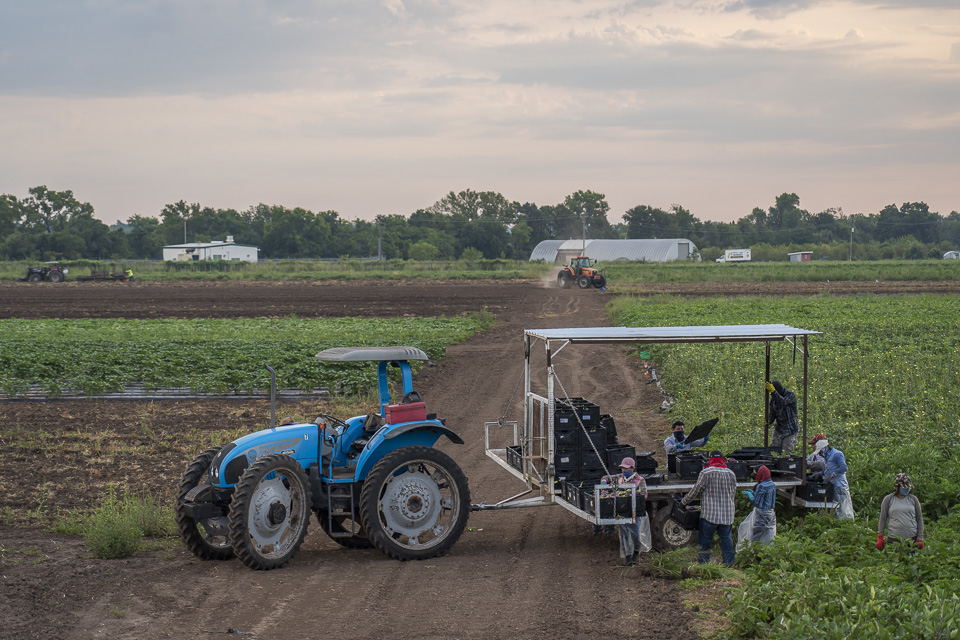 Once a row is picked, the produce immediately gets put onto our harvest tailor. The shade provided by this trailer is an important tool on our farm! It cools down the veggies, removing some of the field heat preparing them for storage in our cooler. Photo by Scott David Gordon.
Once a row is picked, the produce immediately gets put onto our harvest tailor. The shade provided by this trailer is an important tool on our farm! It cools down the veggies, removing some of the field heat preparing them for storage in our cooler. Photo by Scott David Gordon.
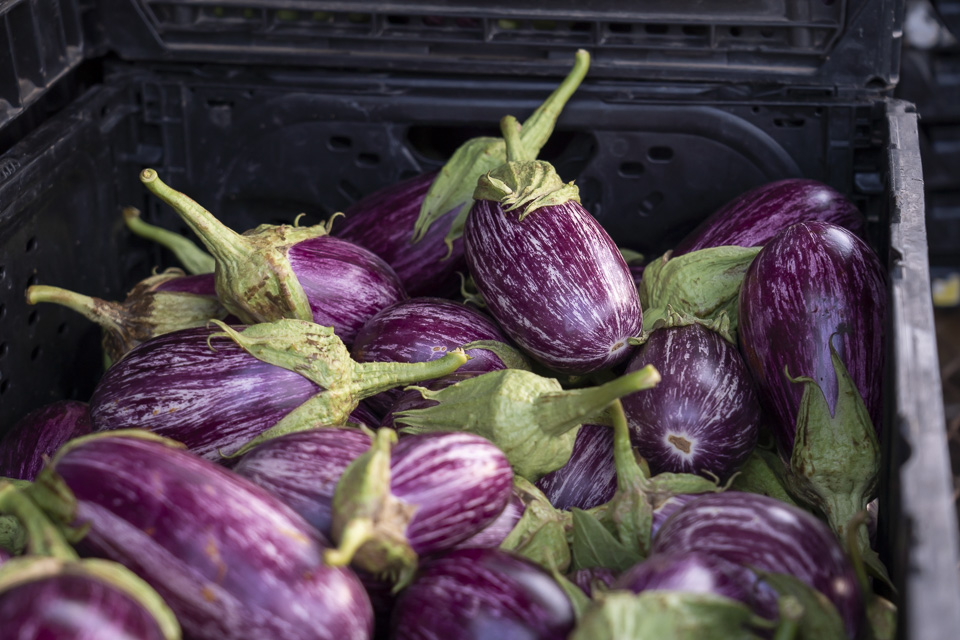 Graffiti eggplant doesn't mind this heat. Photo by Scott David Gordon.
Graffiti eggplant doesn't mind this heat. Photo by Scott David Gordon.
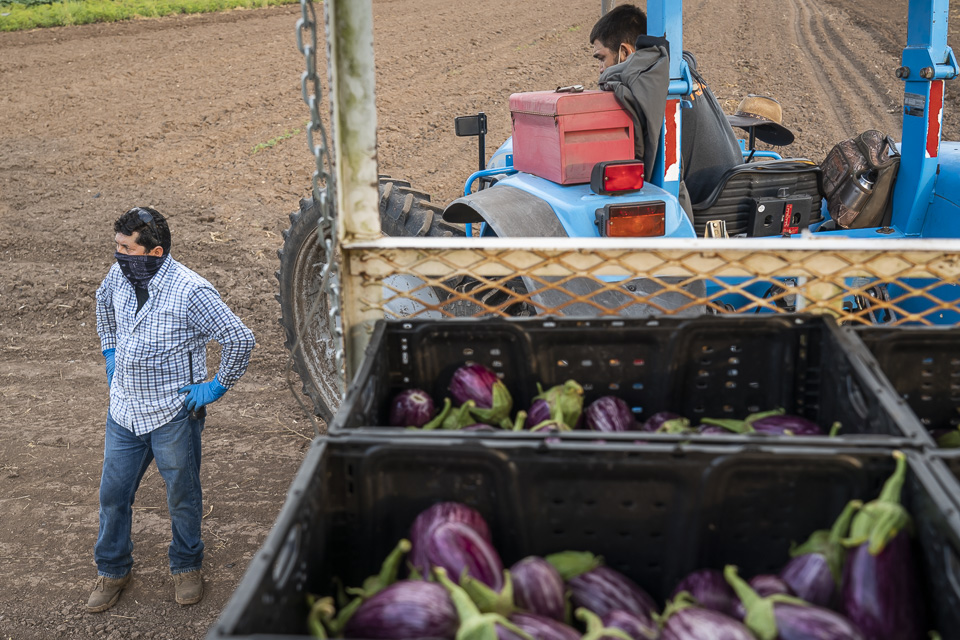 Vicente, our Harvest Manager. Photo by Scott David Gordon.
Vicente, our Harvest Manager. Photo by Scott David Gordon.
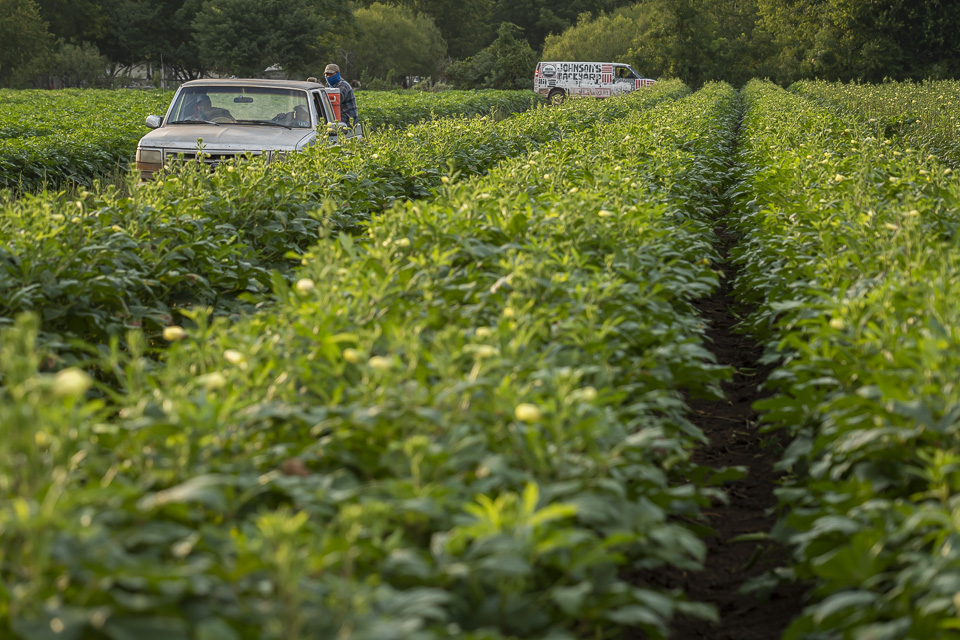 When one of our delivery vehicles becomes no longer highway-worthy, it spends its retirement at the farm. Photo by Scott David Gordon.
When one of our delivery vehicles becomes no longer highway-worthy, it spends its retirement at the farm. Photo by Scott David Gordon.
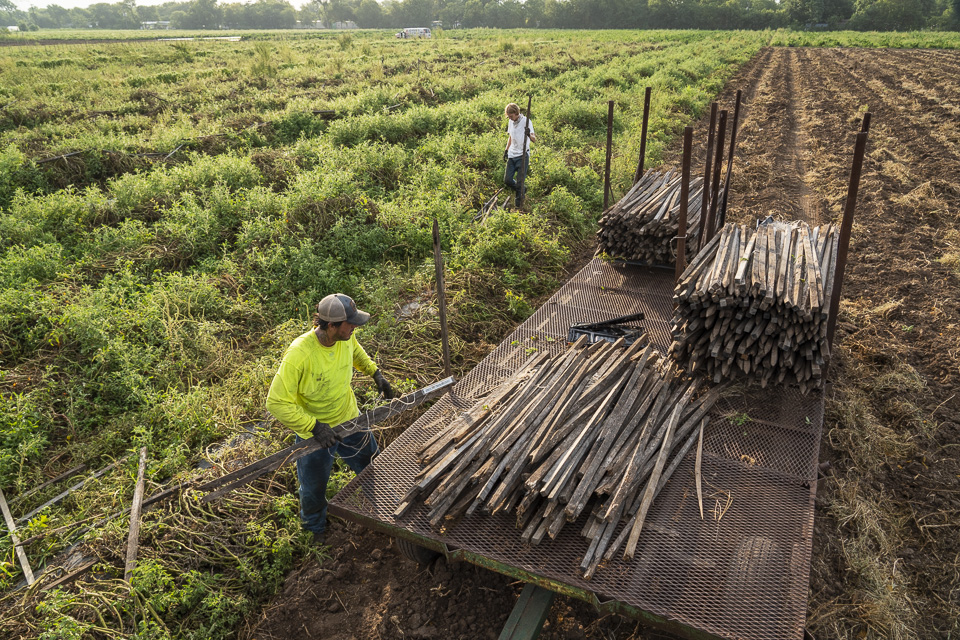 Removing tomato stakes and saying our tomato goodbyes. Until next summer! Photo by Scott David Gordon.
Removing tomato stakes and saying our tomato goodbyes. Until next summer! Photo by Scott David Gordon.
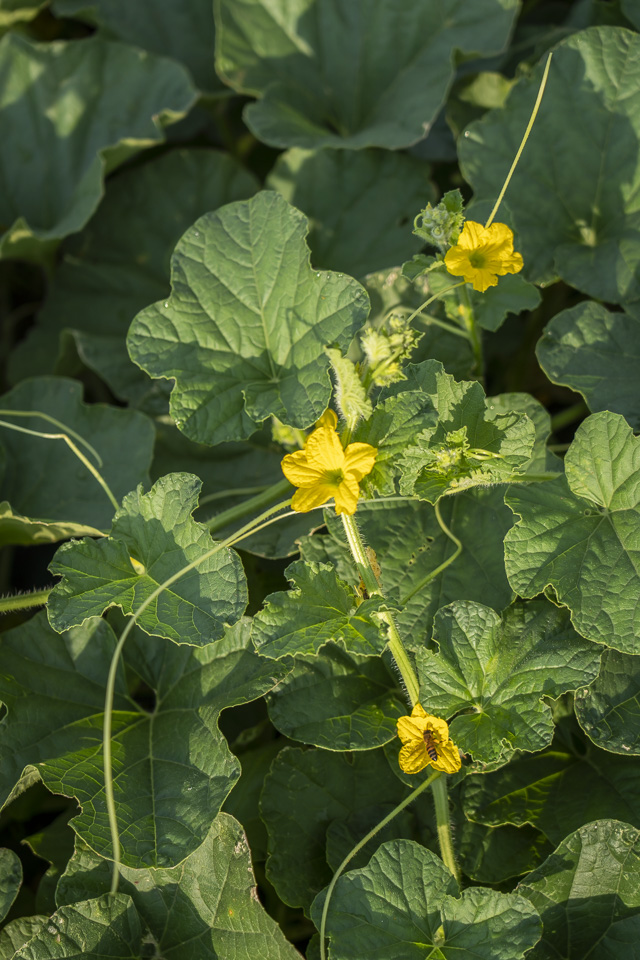 Yellow stars in a mess of green. Photo by Scott David Gordon.
Yellow stars in a mess of green. Photo by Scott David Gordon.
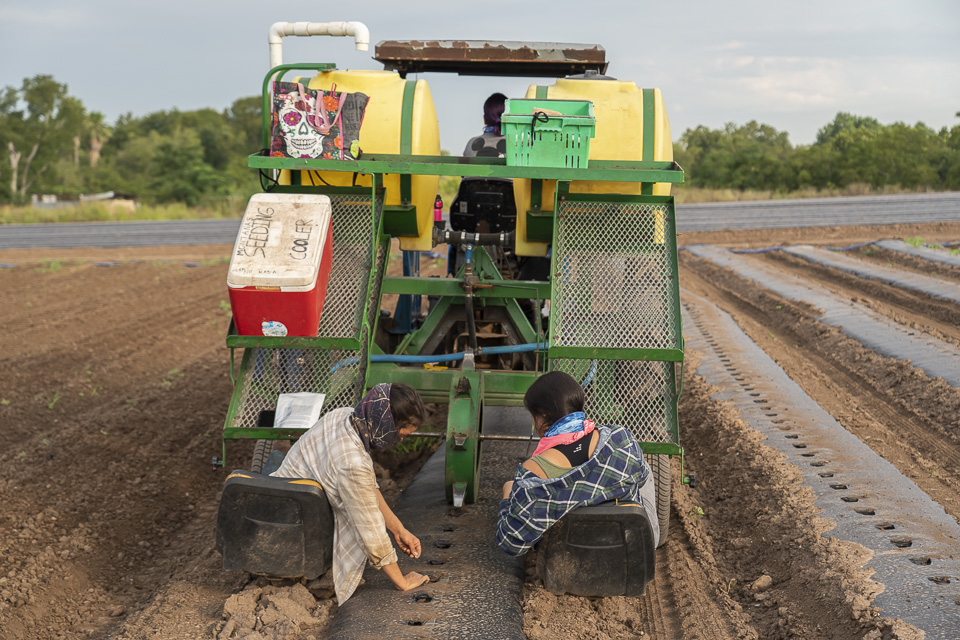 Sometimes we use the transplanter to direct seed crops. Why walk when you can ride? Photo by Scott David Gordon.
Sometimes we use the transplanter to direct seed crops. Why walk when you can ride? Photo by Scott David Gordon.
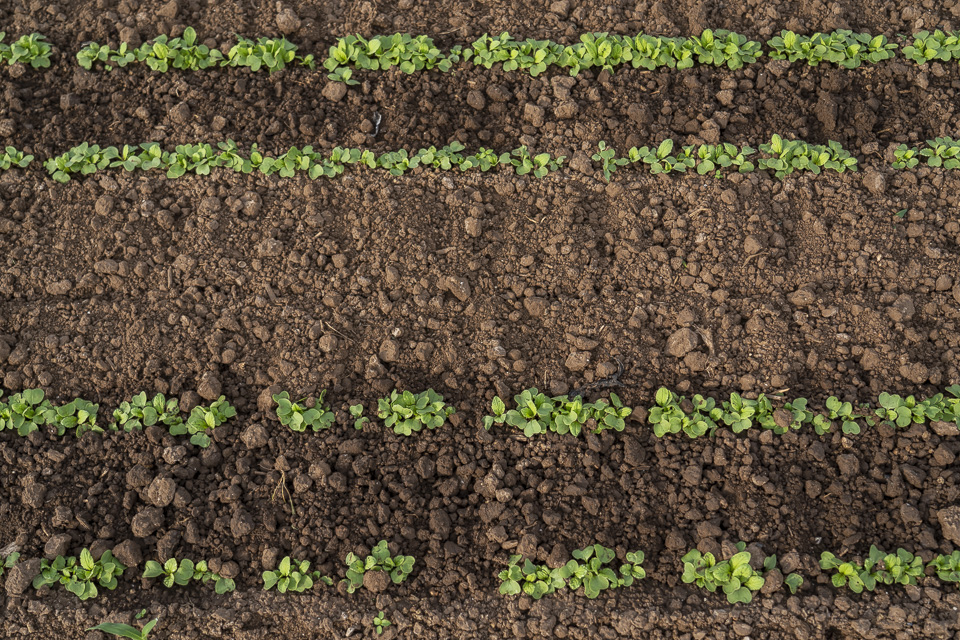 Hello beautiful germination! Photo by Scott David Gordon.
Hello beautiful germination! Photo by Scott David Gordon.
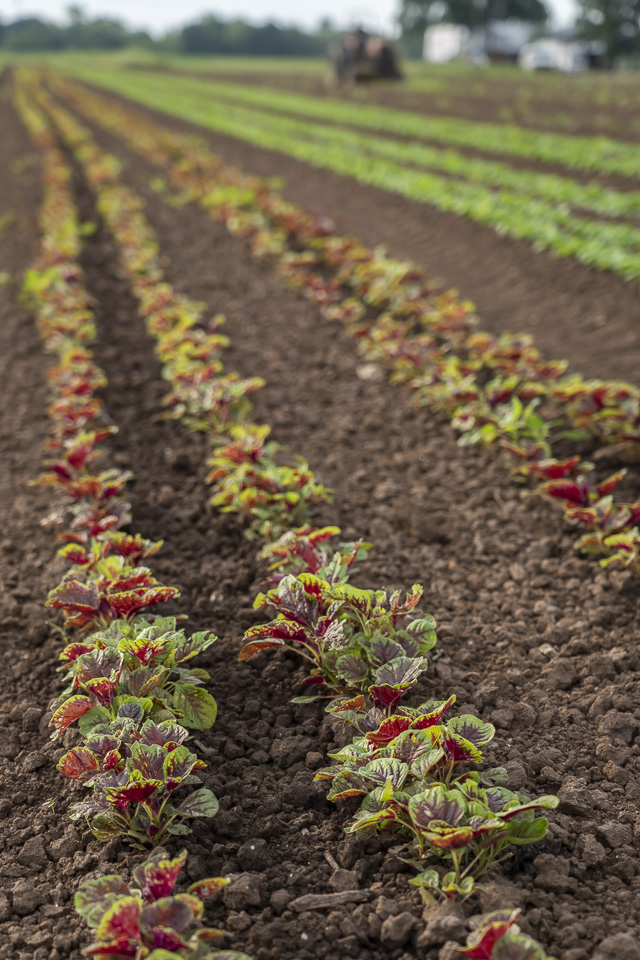 Amaranth sitting nice and pretty. Photo by Scott David Gordon.
Amaranth sitting nice and pretty. Photo by Scott David Gordon.
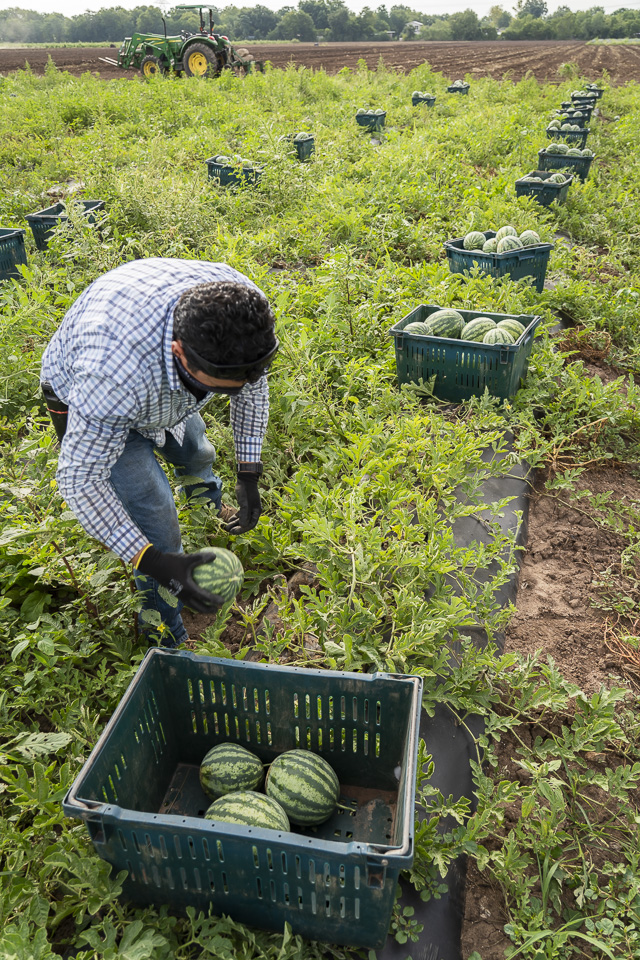 Vicente harvesting watermelon. Photo by Scott David Gordon.
Vicente harvesting watermelon. Photo by Scott David Gordon.
 Secret handshake or tool sharing? Photo by Scott David Gordon.
Secret handshake or tool sharing? Photo by Scott David Gordon.
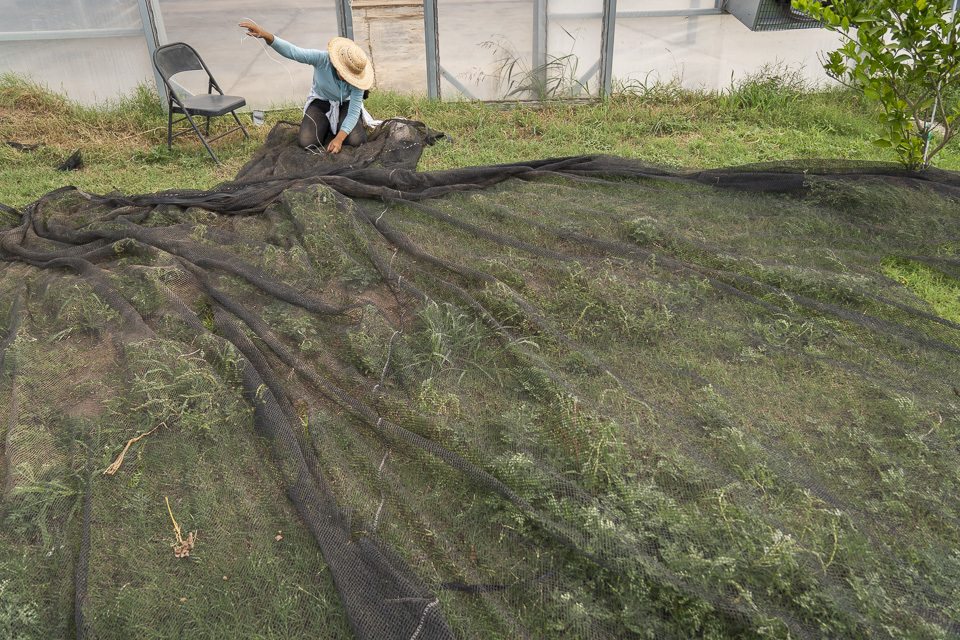 Repairing shade cloth. Photo by Scott David Gordon.
Repairing shade cloth. Photo by Scott David Gordon.
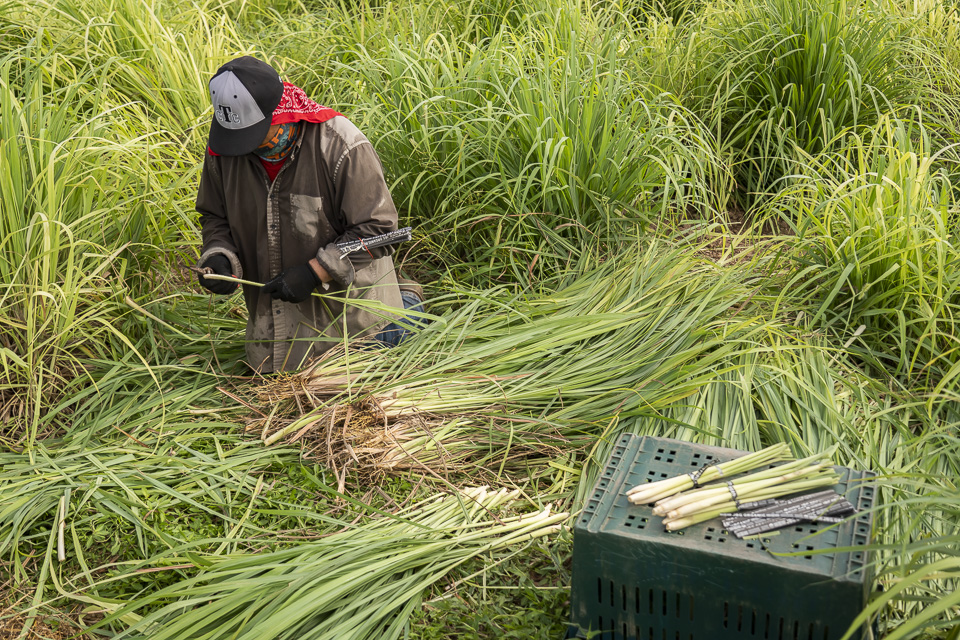 Lucious lemongrass. Photo by Scott David Gordon.
Lucious lemongrass. Photo by Scott David Gordon.
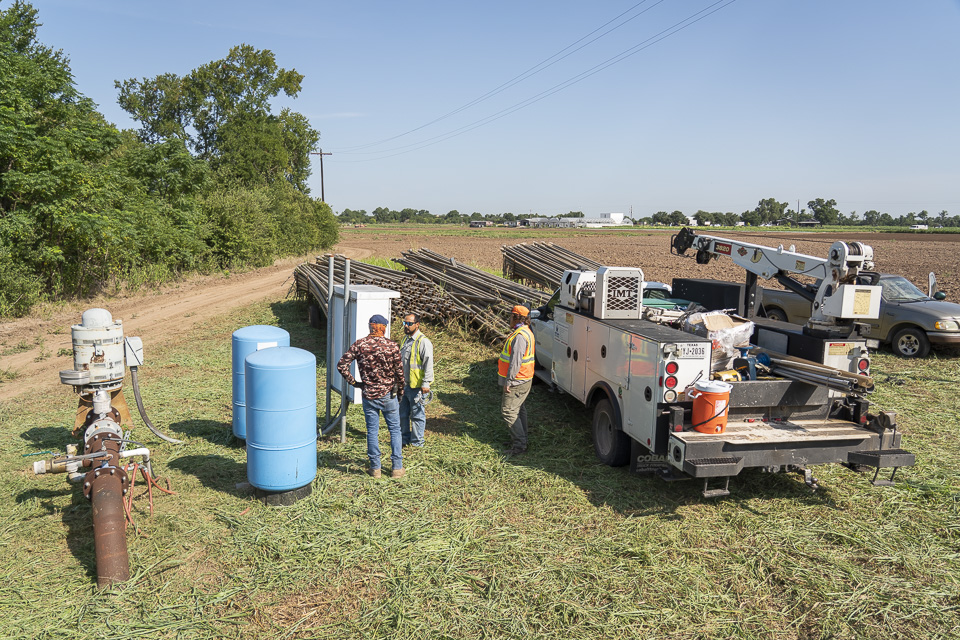 Our pump controller was hit by lightning and quit working! Here, a crew is taking a look at our electrical box to survey the damage. Photo by Scott David Gordon.
Our pump controller was hit by lightning and quit working! Here, a crew is taking a look at our electrical box to survey the damage. Photo by Scott David Gordon.
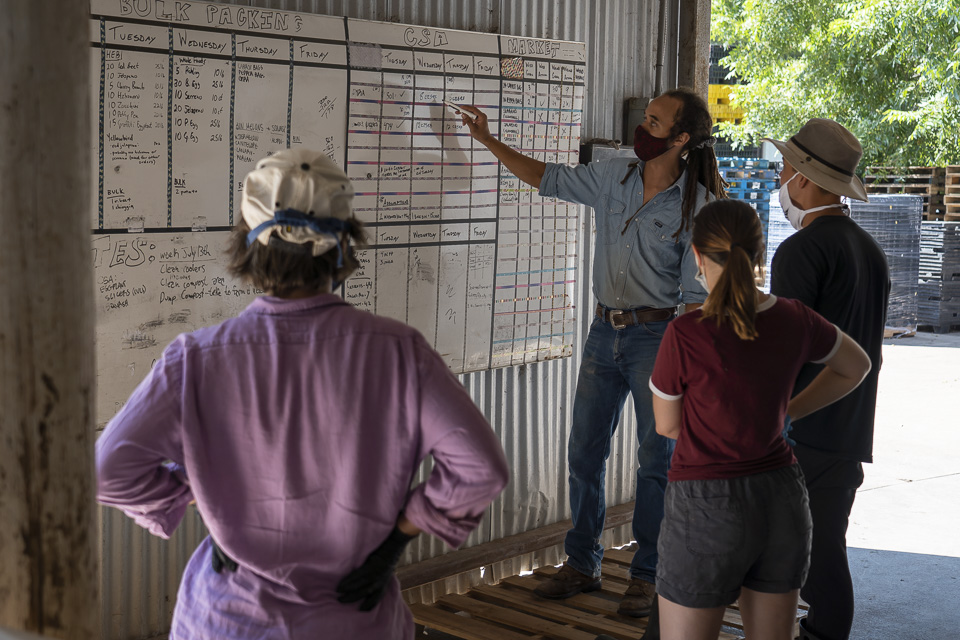 Tracy going over the weekly numbers with our Barn Crew. Photo by Scott David Gordon.
Tracy going over the weekly numbers with our Barn Crew. Photo by Scott David Gordon.
 Often, Tracy will run into Krishna on his way to the office, and Krishna will run into Tracy on his way to the barn. The result? Lots of parking lot meetings. Photo by Scott David Gordon.
Often, Tracy will run into Krishna on his way to the office, and Krishna will run into Tracy on his way to the barn. The result? Lots of parking lot meetings. Photo by Scott David Gordon.
CHOW CHOW OOH LA LA
08/05/20 — Ada Broussard
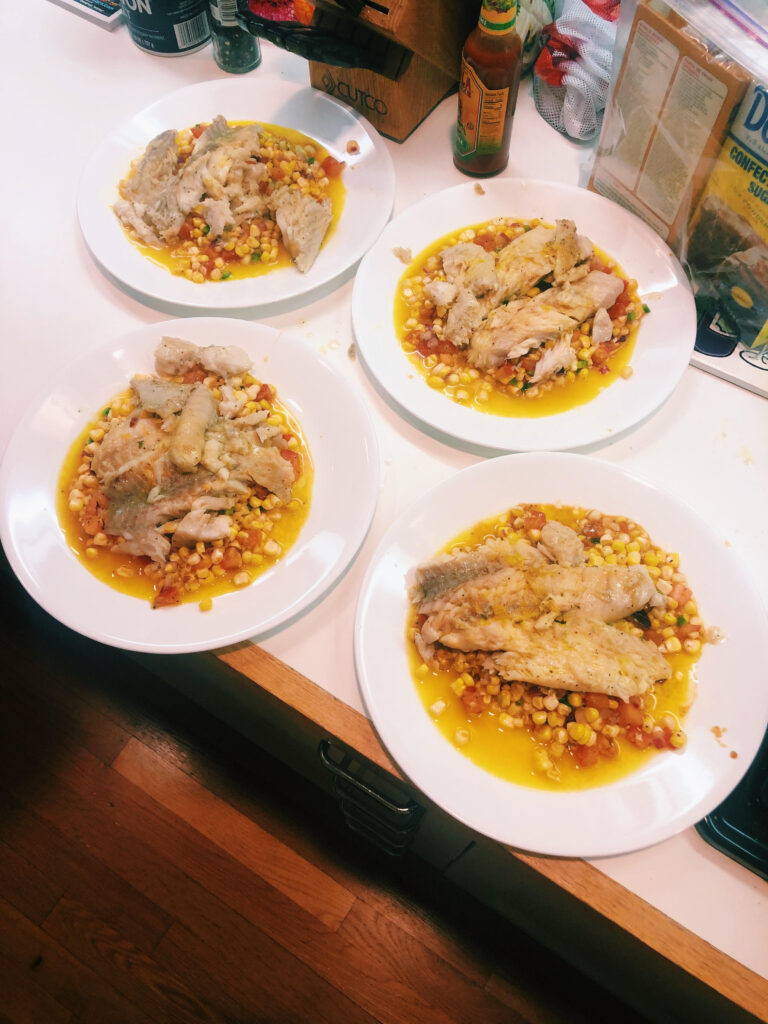 Oh la la is right! Photo by Heydon.
Oh la la is right! Photo by Heydon.
By Heydon
Greetings from Ono Island, Alabama! My quarantine pod has successfully traversed to a more beachy locale. The change of scenery has been life-giving and reviving in a very unexpected way. We are enjoying the normal COVID day to day but inserting more crabbing off the dock, afternoon dips, and casual bushwackers (a mainstay cocktail of southern Alabama). This week’s recipe capitalizes on the Triple Tail we acquired from the local seafood shop down the street and my dear friend’s nage that she made a week ago, which is a beautifully rich and concentrated seafood stock. What really pulls the dish together is the chow chow, a deliciously crunchy and sharp foundation. Augmenting this punchy side with JBG produce, we used end of season tomatoes, bright bell peppers, and jalapenos which deviates slightly from the recipe, but brought the spice we all craved. Check out the recipe here. Enjoy and stay safe, friends.
CSA BOX CONTENTS WEEK OF AUG 3RD
08/03/20 — Scott
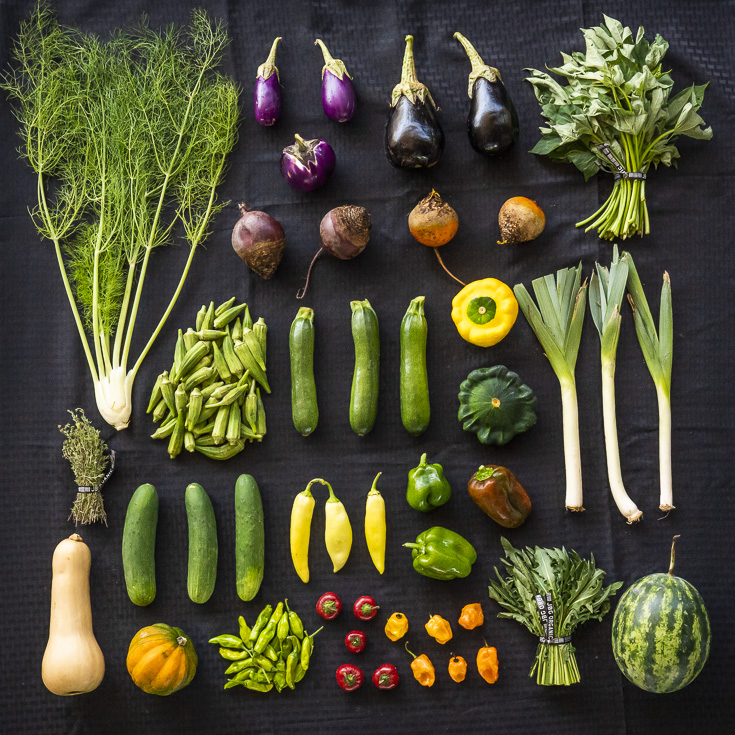 CSA Box Contents Week of Aug 3rd
CSA Box Contents Week of Aug 3rd
Large Box
Beets
Cucumber
Greens, Dandelion
Greens, Sweet Potato
Herb, Farmers Choice
Herb, Fennel
Melon, Farmers Choice
Pepper, Sweet
Potato, Sweet
Radish
Squash, Farmer's Choice
Winter Squash
Beets
Cucumber
Greens, Dandelion
Greens, Sweet Potato
Herb, Farmers Choice
Herb, Fennel
Melon, Farmers Choice
Pepper, Sweet
Potato, Sweet
Radish
Squash, Farmer's Choice
Winter Squash
Medium Box
Beets
Greens, Amaranth
Herb, Farmers Choice
Leek
Melon, Farmers Choice
Okra
Pepper, Hot Medley
Potato, Sweet
Squash, Farmer's Choice
Winter Squash
Beets
Greens, Amaranth
Herb, Farmers Choice
Leek
Melon, Farmers Choice
Okra
Pepper, Hot Medley
Potato, Sweet
Squash, Farmer's Choice
Winter Squash
Small Box
Cucumber
Eggplant
Greens, Sweet Potato
Herb, Farmers Choice
Leek
Pepper, Hot Medley
Potato
Cucumber
Eggplant
Greens, Sweet Potato
Herb, Farmers Choice
Leek
Pepper, Hot Medley
Potato
Individual Box
Beets
Eggplant
Okra
Pepper, Sweet
Squash, Farmer's Choice
Beets
Eggplant
Okra
Pepper, Sweet
Squash, Farmer's Choice
THE MERITS OF SWEET PEPPERS
07/31/20 — Ada Broussard
If you’re a CSA Member, you likely noticed the colorful assortment of sweet peppers scattered throughout your CSA box this week. We grow over 20 different varieties of peppers here at JBG, but this week we’re talking about those whose cell walls pack a sucrosey punch. Sweet peppers, members of the Capsicum family, can be crunched raw, like an apple, or incorporated into cooked dishes, providing a curtain of candy-like caramelization sweetening every bite. Peppers of all varieties are measured by Scoville heat units or SHUs. Hot peppers like jalapeños (2500-8000 SHUs) and habaneros (100,000-350,000 SHUs) aren’t the crop we care about today, and instead we’re just talking about the sweeties that adorn our fields: bell peppers (0-100 SHUs), banana peppers (1-500 SHU) and red and yellow Italian sweet peppers (0-500).
![]()
Sweet peppers are special not only because they are...sweet… but also because they survived the summer, despite the odds. You see, sweet peppers (often yellow, red, or orange in color) all start off as green. Green bell peppers, for example, are just the early, young, version of their red and yellow successors. It’s easy to harvest a pepper when it’s green - it hasn’t spent much time on the plant, and has thus avoided sun and pest damage. It’s more economical for farmers’ to harvest peppers early because each day the fruit sits on the plant, the more labor it takes to tend to the crop. But, what would a southern summer be without sweet peppers?
It may seem like we’re overloading you with sweet peppers this week, but we’re working off the assumption that there’s no such thing as too much of a good thing. Surplus peppers can be diced, blanched, and frozen or roasted, peeled, and packed in olive oil. Your future self will thank you for the prep work and warm, sweet flavors ready to enhance any fall feast or winter stew.
![]()
HOW TO STORE: Store unwashed sweet (and spicy, if you’re wondering) peppers in a plastic bag, in the refrigerator. Wait to wash the peppers just before you’re going to use them. Peppers stored this way should last for at least 1 week, potentially longer if they’re green. Keeping peppers in a bag, in the fridge, will help keep the moisture in the pepper and prolong the crunch-factor. Green peppers will usually last a bit longer than red or yellow ones, so save the green ones for later and use the others first!
HOW TO COOK: Stuff em’, saute them, eat them raw dipped in hummus, or roast them slow. The ways to eat sweet peppers are truly endless; incorporating sweet peppers into your cooking is a simple way to add (natural) sugar to your dish, which, spoiler alert: make everything taste a little more delicious. Use sweet peppers as a background ingredient (for example: as a part of the Holy Trinity as seen in Creole and Cajun cuisine or the base of a stirfry) or highlight peppers as an all-star: pitted and then stuffed with cheese, or rice, or cheesy rice.
HOW TO PRESERVE: Peter Piper picked a peck of pickled peppers, and you can definitely do the same. Peppers can also be blanched and frozen, but can also be slowly cooked in olive oil and packed into jars. Sweet peppers can be made into a sweet jam, and then schmeared on crackers with a healthy dose of cream cheese. Make a double batch of salsa or tomato sauce with some of your sweet peppers, some now, and some for later.
![]()
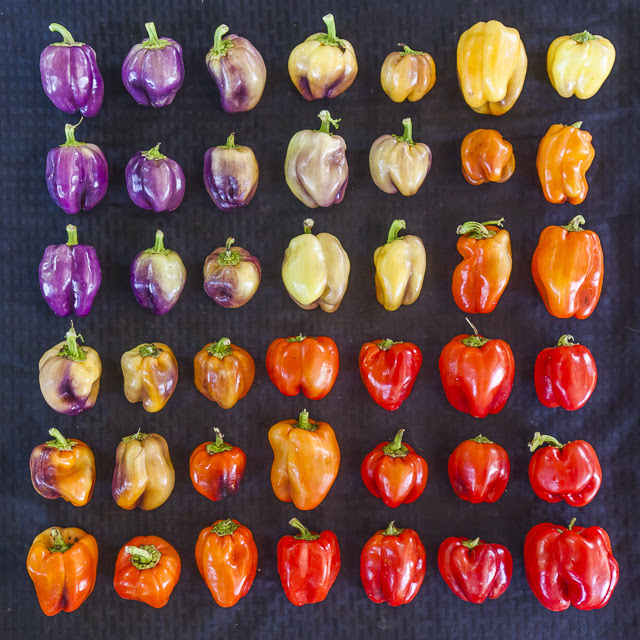
Sweet peppers are special not only because they are...sweet… but also because they survived the summer, despite the odds. You see, sweet peppers (often yellow, red, or orange in color) all start off as green. Green bell peppers, for example, are just the early, young, version of their red and yellow successors. It’s easy to harvest a pepper when it’s green - it hasn’t spent much time on the plant, and has thus avoided sun and pest damage. It’s more economical for farmers’ to harvest peppers early because each day the fruit sits on the plant, the more labor it takes to tend to the crop. But, what would a southern summer be without sweet peppers?
It may seem like we’re overloading you with sweet peppers this week, but we’re working off the assumption that there’s no such thing as too much of a good thing. Surplus peppers can be diced, blanched, and frozen or roasted, peeled, and packed in olive oil. Your future self will thank you for the prep work and warm, sweet flavors ready to enhance any fall feast or winter stew.
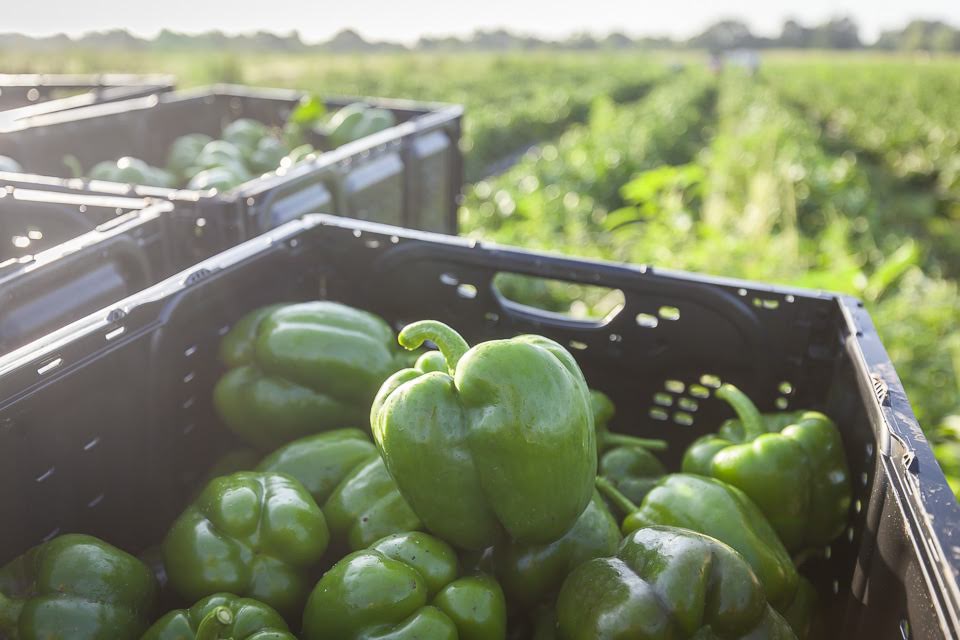
HOW TO STORE: Store unwashed sweet (and spicy, if you’re wondering) peppers in a plastic bag, in the refrigerator. Wait to wash the peppers just before you’re going to use them. Peppers stored this way should last for at least 1 week, potentially longer if they’re green. Keeping peppers in a bag, in the fridge, will help keep the moisture in the pepper and prolong the crunch-factor. Green peppers will usually last a bit longer than red or yellow ones, so save the green ones for later and use the others first!
HOW TO COOK: Stuff em’, saute them, eat them raw dipped in hummus, or roast them slow. The ways to eat sweet peppers are truly endless; incorporating sweet peppers into your cooking is a simple way to add (natural) sugar to your dish, which, spoiler alert: make everything taste a little more delicious. Use sweet peppers as a background ingredient (for example: as a part of the Holy Trinity as seen in Creole and Cajun cuisine or the base of a stirfry) or highlight peppers as an all-star: pitted and then stuffed with cheese, or rice, or cheesy rice.
HOW TO PRESERVE: Peter Piper picked a peck of pickled peppers, and you can definitely do the same. Peppers can also be blanched and frozen, but can also be slowly cooked in olive oil and packed into jars. Sweet peppers can be made into a sweet jam, and then schmeared on crackers with a healthy dose of cream cheese. Make a double batch of salsa or tomato sauce with some of your sweet peppers, some now, and some for later.
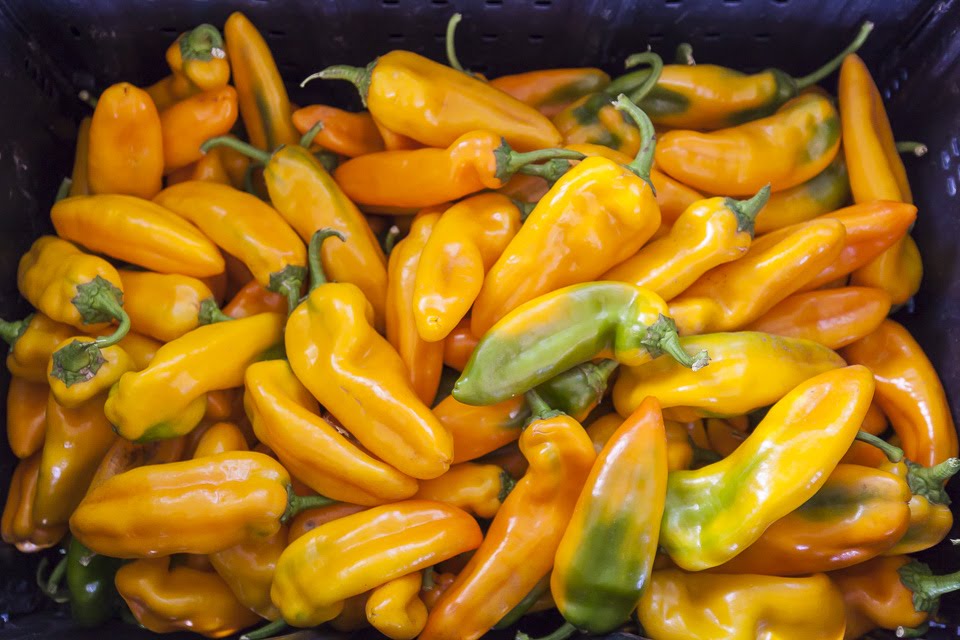
WATERMELON RIND CURRY
07/29/20 — Ada Broussard
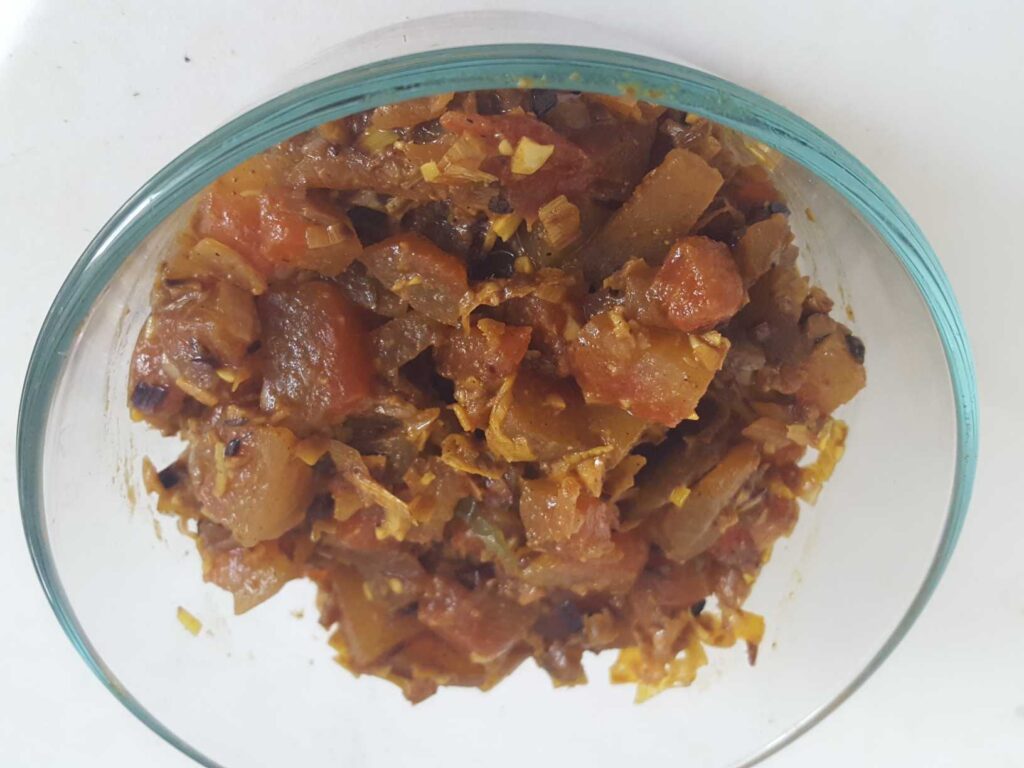 Watermelon rind curry.
Watermelon rind curry.
Recipe and photos by Agatha B.
When one of our CSA Members, Agatha, emailed the farm with this recipe, we knew we had to share. It's just too weird, and unique, not to. The best part? After e-mailing us her watermelon rind curry recipe, Agatha sent over her watermelon rind pickle recipe! Scroll to the bottom of this post for pickle. Thank you Agatha, for your kind words about our veggies, and also for these amazingly creative recipes!
Hey lovely farmers, I wanted to thank you for the beautiful food and to celebrate watermelon. I'm not sure if we're getting more-- but if we do, I'm definitely making more of this curry.
much appreciation, Agatha
p.s. The recipe is also easy to cut in half-- which is what I did because I'd turned the rest into refrigerator pickles.)
WATERMELON RIND CURRY
- 4-5 c. watermelon rind with the dark green exterior removed, chopped into about 1/4 – 1/2 inch pieces
- 1/2 c. finely chopped onions and/or leeks (soft white part of leeks)
- 1 T. oil
- 1/2 t. cumin seeds
- 6 medium cloves garlic, minced
- 1 T. ginger, minced
- 1/2 serrano pepper, seeds removed, minced
- 1 t. paprika
- 1 t. coriander powder
- 1/2 t. amchur (dried green mango powder; this is optional. Sub a squeeze of lemon juice if amchur is unavailable)
- 1/4 t. turmeric powder
- 1/2 t. salt
- 1/4 c. water (more, if needed)
- 1/4 t. garam masala
Heat oil in a pot or 12-inch cast iron pan. When the oil is hot, add cumin seeds. When they sizzle and/or pop, add onion/leeks. Cook on low heat for about 5 minutes, stirring regularly, until the soften and begin to brown. Add garlic, ginger, and pepper and cook for another 1-2 minutes, stirring frequently.
Add paprika, coriander powder, amchur, turmeric, and salt. And stir until the onions, leeks, and garlic are coated. Add watermelon and water; mix well.
Cook covered for about 10-12 minutes total, stirring 3-4 times. If the water evaporates and the curry starts sticking, add a little more water.
When the rind is soft and most of the water is absorbed, and add the garam masala. Mix well and cook with the lid removed for another couple minutes.
Serve as a side dish with flatbread or over a grain like rice. The flavors only get better after a few days!
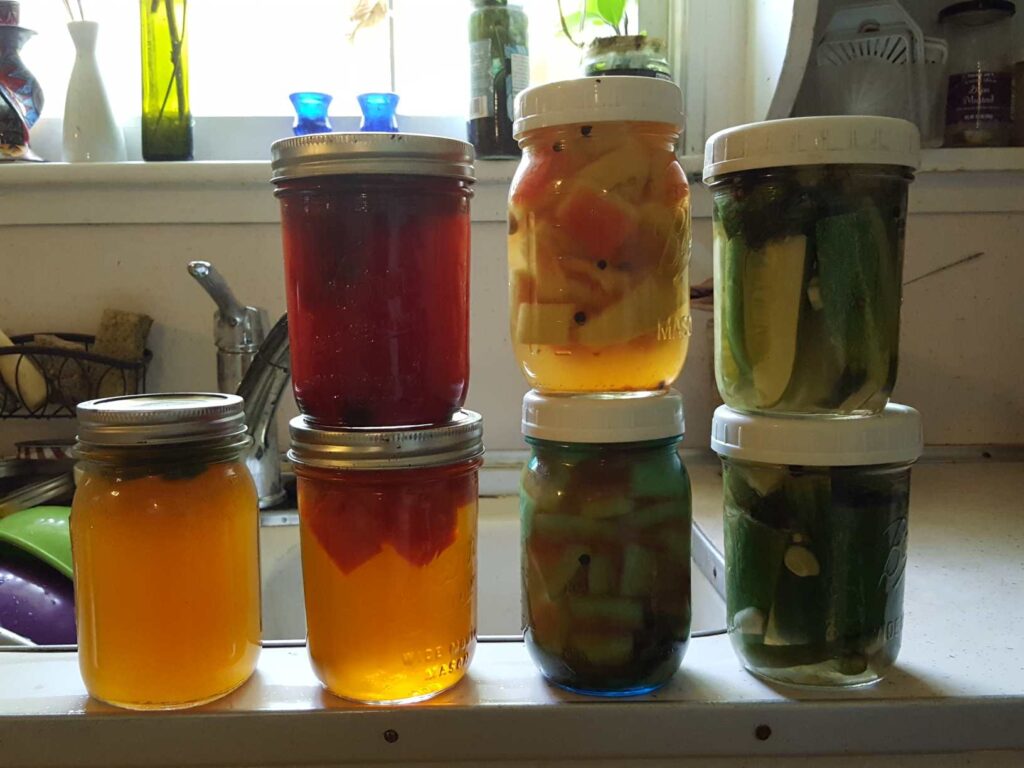 Watermelon rind and cucumber pickles by Agatha!
Watermelon rind and cucumber pickles by Agatha!
SWEET WATERMELON RIND PICKLE
- enough peeled and cubed watermelon chunks to fill a pint-sized mason jar + a small handful of extra pieces (the pieces of rind shrink a little after sitting in the warm brine)
- 1/2 c. water
- 1/2 c. cider vinegar
- 1-2 T. sugar (depends on your taste)
- 2 t. salt
- 1 T. ginger (about 1”) in slices
- 3 cardamom pods
- 1/4 t. black peppercorns
Scoop/slice out melon leaving about 1/4-1/2 inch of red flesh.
Peel off outer dark green skin with vegetable peeler and then cut rind into about 1-inch cubes.
Bring the vinegar, water, sugar, ginger, salt and spices to a boil over medium-high heat in a small saucepan (2-quart). Hold the boil for 60 seconds then carefully add the watermelon. Return to a boil and turn off the heat. Remove the pan from the heat and cool for 30 minutes.
Put the rind in the mason jar with the cardamom, pepper, and ginger. Pour on as much of the pickling juice as possible. Seal the jar and leave at room temperature for another one and half hours. Store in the refrigerator.
CSA BOX CONTENTS WEEK OF JULY 27TH
07/27/20 — Scott
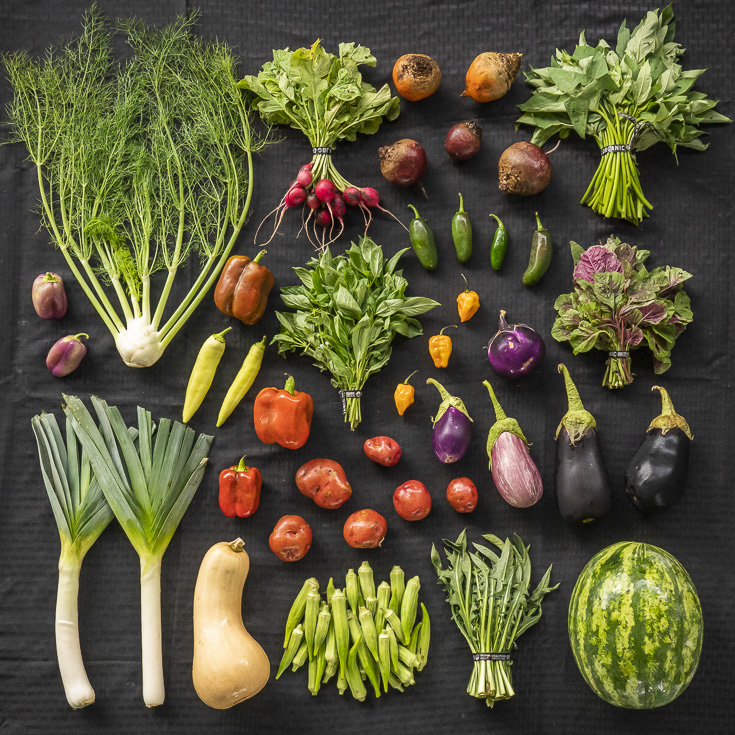 CSA Box Contents Week of July 27th
CSA Box Contents Week of July 27th
Large Box
Beets
Eggplant
Greens, Dandelion
Greens, Sweet Potato
Herb, Basil
Herb, Fennel
Melon, Farmers Choice
Okra
Pepper, Sweet Medley
Potato
Radish
Winter Squash
Beets
Eggplant
Greens, Dandelion
Greens, Sweet Potato
Herb, Basil
Herb, Fennel
Melon, Farmers Choice
Okra
Pepper, Sweet Medley
Potato
Radish
Winter Squash
Medium Box
Beets
Farmers Choice
Herb, Basil
Leek
Melon, Farmers Choice
Okra
Pepper, Sweet Medley
Potato
Squash, Farmer's Choice
Winter Squash
Beets
Farmers Choice
Herb, Basil
Leek
Melon, Farmers Choice
Okra
Pepper, Sweet Medley
Potato
Squash, Farmer's Choice
Winter Squash
Small Box
Eggplant
Farmers Choice
Herb, Basil
Leek
Pepper, Sweet Medley
Potato
Squash, Farmer's Choice
Eggplant
Farmers Choice
Herb, Basil
Leek
Pepper, Sweet Medley
Potato
Squash, Farmer's Choice
Individual Box
Beets
Eggplant
Okra
Pepper, Sweet Medley
Winter Squash
Beets
Eggplant
Okra
Pepper, Sweet Medley
Winter Squash
SUSTAINABLE FOOD CENTER: LOCAL FOOD FOR ALL
07/24/20 — Ada Broussard
Sustainable Food Center runs two farmers’ markets weekly, our flagship Downtown and neighborhood market at Sunset Valley.
The New Normal
Every Saturday morning around 5:30 trucks begin to ramble into Austin weighed down with hill country peaches, grass-fed beef, and locally grown veggies. Farmers and ranchers start setting up their booths before the sun peaks through the valleys of towering office buildings downtown, carefully arranging their wares to catch the eye of market customers. Alex Mace, SFC’s food access manager, helps to stack our new WIC Produce Boxes near the entrance to market and draws chalk lines 6 feet apart in front, anticipating the lines of people who are coming to pick up their veggie haul.
The ritual of creating a market from nothing has been happening since 2003 at Republic Square and 2008 at the Toney Burger Stadium although things look different this year than last. During COVID we have had to adjust to ensure the safety of our customers, vendors, and staff. Gone are the densely packed market stalls that scream out in abundance, and in their place are expanses of vendors donning masks and buffer tables between piles of produce and patient customers.![]()
In this season of pivots and pilot programs, perhaps the most innovative is this preorder option for food access programming. Historically clients must show up in person, shopping list and cards in hand for individual consultation to pick up WIC vouchers. Now clients can verify their eligibility online and schedule pick up times for pre-packed local food boxes from either market. This lessens the time folks must be in the market space and ensures quick moving, socially distanced encounters with staff. It also helps local farms, like Johnson’s Backyard Garden, who now have a guaranteed number of purchases through this program every week.
The Right to Healthy Food
Sustainable Food Center’s mission is to cultivate a just and regenerative food system so people and the environment can thrive. What this means is that we work closely with farmers in Central Texas to provide resources to help them preserve soil health, get business management training, and connect with buyers through our markets and connections with institutional purchasers. We work closely with policymakers to tell the stories of small farmers, advocating for programs that will help them strengthen their farms and communities. We work with the public to promote at home gardening and healthy eating with our nutrition classes (and new edition of our cookbook!) What really sets us apart is our belief that healthy food is for everyone.
![]()
Over 14% of Travis County Residents are food insecure and have had trouble meeting their food needs in the past year. Emergency hunger organizations across the country have been overwhelmed since the beginning of our current public health crisis, and while these organizations can help bridge the gap for many families, they do not work on systemic issues facing our food system. SFC is working to create a regenerative food system – where food is grown in our communities, the land is restored, and food is available to all people.
SFC has provided food access programming since 1995 through neighborhood farm stands and the launch of our Downtown market in 2003. SFC markets accept Lone Star/SNAP (Supplemental Nutrition Assistance Program - formerly known as food stamps), WIC (Women, Infants and Children) and FMNP (Farmers’ Market Nutrition Program) benefits at area Farmers’ Markets, Farm Stands, and partner sites throughout Austin helping people access local, fresh food for their families. These benefits are doubled through Double Up Food Bucks, matching up to $30 in SNAP, WIC, and FMNP benefits for the purchase of fruits and vegetables.
Every year in March we begin gearing up for the Farmers Market Nutrition Program. Clients love this seasonal benefit program that helps them take full advantage of the amazing array of spring and summer veggies available in Central Texas. However, this year was different. As markets faced potential shut downs, low attendance, vendors leaving the market and funding insecurity we chose to delay the beginning of FMNP season while we created a solution that mitigated long lines and availability of produce.
This is where the WIC boxes come in. Clients can now pre-order a $30 box of produce from farms like JBG, Lightsey Farm, and Urban Roots for pickup at either of our markets. WIC eligible clients can order a box online, or call to talk to one of our promotoras through our help desk to place an order. So far, we have distributed 220 boxes, or 3,300 lbs. of food!
Friendly Neighborhood Farmer
We are all shifting our lifestyles, our expectations, and the way we nourish ourselves. SFC is adapting and moving online, to preorders for low income families and everyone through our new Neighborhood Pop Up Grocery project, supporting Farmshare and their Fresh for Less produce delivery, and working at all costs to keep markets open and safe for all. Throughout this, JBG has been a stalwart partner and resource for the community.
![]() Farmer Brenton in the early days of the Downtown Farmers' Market.
Farmer Brenton in the early days of the Downtown Farmers' Market.
The New Normal
Every Saturday morning around 5:30 trucks begin to ramble into Austin weighed down with hill country peaches, grass-fed beef, and locally grown veggies. Farmers and ranchers start setting up their booths before the sun peaks through the valleys of towering office buildings downtown, carefully arranging their wares to catch the eye of market customers. Alex Mace, SFC’s food access manager, helps to stack our new WIC Produce Boxes near the entrance to market and draws chalk lines 6 feet apart in front, anticipating the lines of people who are coming to pick up their veggie haul.
The ritual of creating a market from nothing has been happening since 2003 at Republic Square and 2008 at the Toney Burger Stadium although things look different this year than last. During COVID we have had to adjust to ensure the safety of our customers, vendors, and staff. Gone are the densely packed market stalls that scream out in abundance, and in their place are expanses of vendors donning masks and buffer tables between piles of produce and patient customers.
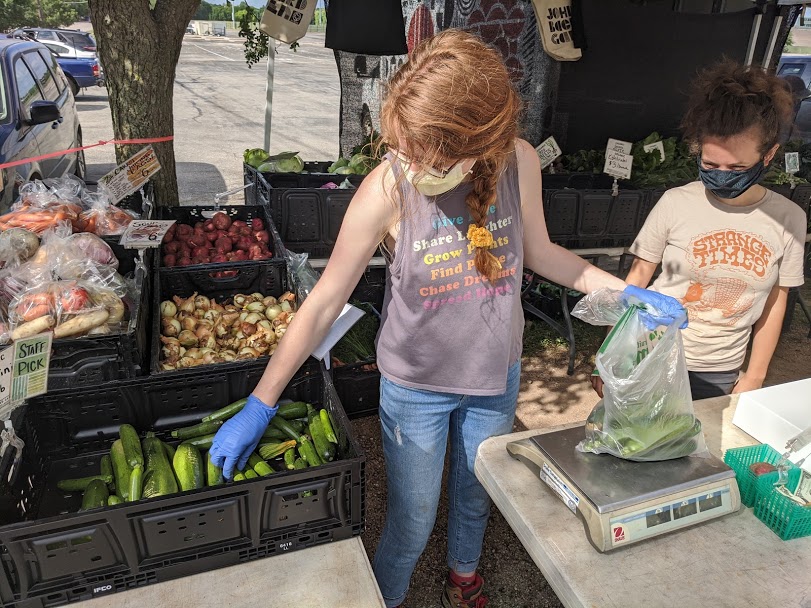
In this season of pivots and pilot programs, perhaps the most innovative is this preorder option for food access programming. Historically clients must show up in person, shopping list and cards in hand for individual consultation to pick up WIC vouchers. Now clients can verify their eligibility online and schedule pick up times for pre-packed local food boxes from either market. This lessens the time folks must be in the market space and ensures quick moving, socially distanced encounters with staff. It also helps local farms, like Johnson’s Backyard Garden, who now have a guaranteed number of purchases through this program every week.
The Right to Healthy Food
Sustainable Food Center’s mission is to cultivate a just and regenerative food system so people and the environment can thrive. What this means is that we work closely with farmers in Central Texas to provide resources to help them preserve soil health, get business management training, and connect with buyers through our markets and connections with institutional purchasers. We work closely with policymakers to tell the stories of small farmers, advocating for programs that will help them strengthen their farms and communities. We work with the public to promote at home gardening and healthy eating with our nutrition classes (and new edition of our cookbook!) What really sets us apart is our belief that healthy food is for everyone.
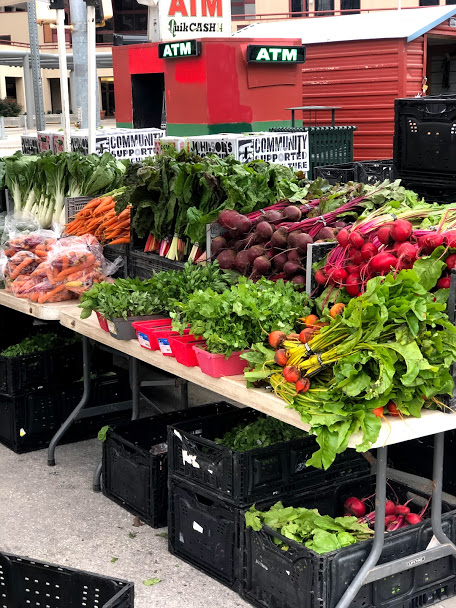
Over 14% of Travis County Residents are food insecure and have had trouble meeting their food needs in the past year. Emergency hunger organizations across the country have been overwhelmed since the beginning of our current public health crisis, and while these organizations can help bridge the gap for many families, they do not work on systemic issues facing our food system. SFC is working to create a regenerative food system – where food is grown in our communities, the land is restored, and food is available to all people.
SFC has provided food access programming since 1995 through neighborhood farm stands and the launch of our Downtown market in 2003. SFC markets accept Lone Star/SNAP (Supplemental Nutrition Assistance Program - formerly known as food stamps), WIC (Women, Infants and Children) and FMNP (Farmers’ Market Nutrition Program) benefits at area Farmers’ Markets, Farm Stands, and partner sites throughout Austin helping people access local, fresh food for their families. These benefits are doubled through Double Up Food Bucks, matching up to $30 in SNAP, WIC, and FMNP benefits for the purchase of fruits and vegetables.
Every year in March we begin gearing up for the Farmers Market Nutrition Program. Clients love this seasonal benefit program that helps them take full advantage of the amazing array of spring and summer veggies available in Central Texas. However, this year was different. As markets faced potential shut downs, low attendance, vendors leaving the market and funding insecurity we chose to delay the beginning of FMNP season while we created a solution that mitigated long lines and availability of produce.
This is where the WIC boxes come in. Clients can now pre-order a $30 box of produce from farms like JBG, Lightsey Farm, and Urban Roots for pickup at either of our markets. WIC eligible clients can order a box online, or call to talk to one of our promotoras through our help desk to place an order. So far, we have distributed 220 boxes, or 3,300 lbs. of food!
Friendly Neighborhood Farmer
We are all shifting our lifestyles, our expectations, and the way we nourish ourselves. SFC is adapting and moving online, to preorders for low income families and everyone through our new Neighborhood Pop Up Grocery project, supporting Farmshare and their Fresh for Less produce delivery, and working at all costs to keep markets open and safe for all. Throughout this, JBG has been a stalwart partner and resource for the community.
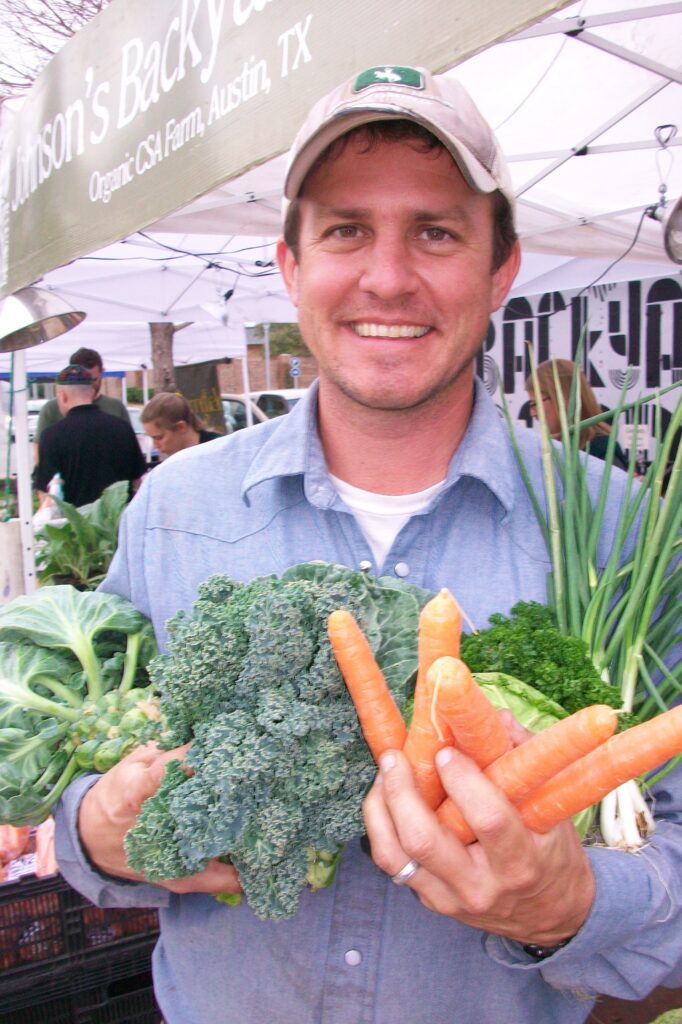 Farmer Brenton in the early days of the Downtown Farmers' Market.
Farmer Brenton in the early days of the Downtown Farmers' Market.






 0 ITEMS IN CART
0 ITEMS IN CART 

